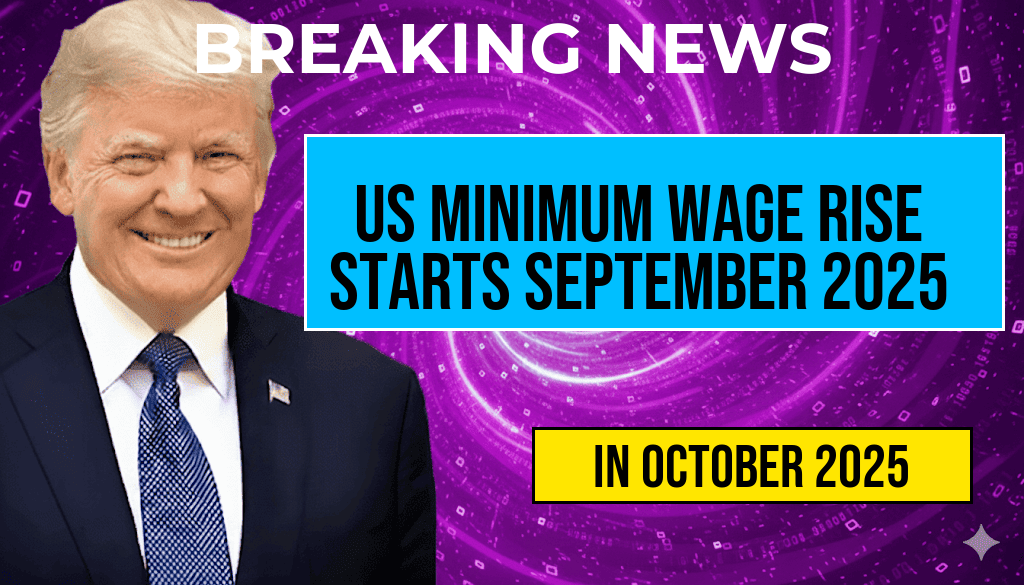The United States is set to see a nationwide increase in the federal minimum wage, effective September 30, 2025. This change stems from recent legislative adjustments aimed at addressing wage stagnation and inflation concerns. Under the new policy, the minimum hourly rate will rise across various states and jurisdictions, with some regions implementing adjustments that surpass the federal baseline. The move reflects ongoing efforts by policymakers to ensure fair compensation for low-wage workers amidst rising living costs. Employers, workers, and policymakers are closely monitoring the transition, which could influence employment dynamics and consumer spending patterns nationwide. Below is a comprehensive list of the updated hourly minimum wages, alongside insights into regional variations and factors influencing the adjustments.
Understanding the 2025 Minimum Wage Adjustment
The federal minimum wage, which has been $7.25 since 2009, is set to increase for the first time in over a decade. While some states and localities have established their own minimum wages exceeding the federal level, this federal update sets a national baseline. The increase is part of a broader legislative effort to promote wage growth for low-income workers, aligning with inflation and cost-of-living increases. Notably, the adjustment affects both federal contractors and businesses operating under federal jurisdiction, although many states and municipalities maintain their own schedules for minimum wage updates. According to the Wikipedia page on minimum wage in the U.S., these local variations often exceed federal standards, creating a patchwork of wage standards across the country.
Details of the New Hourly Rates by Region
| Region | New Hourly Rate | Notes |
|---|---|---|
| Federal (Nationwide baseline) | $10.50 | Increment from $7.25; applies to federal contractors and applicable employers |
| California | $16.00 | Statewide minimum wage, increased from $15.50 |
| New York | $15.75 | Varies by region; $15.75 for NYC and surrounding areas |
| Texas | $12.00 | No statewide minimum wage law; local jurisdictions set their own rates |
| Florida | $12.00 | Statewide minimum wage increased from $11.00 |
| Illinois | $14.00 | Increment from $13.00, phased in over several years |
| Washington | $15.74 | Adjusted annually based on inflation |
| Alabama | $7.25 | Federal minimum; no state-level minimum wage law |
States with No Minimum Wage Legislation
Several states, including Alabama, Georgia, and Mississippi, continue to adhere to the federal minimum wage of $7.25. These regions often rely solely on federal standards, although some cities within these states may impose higher local minimum wages. The decision to maintain federal levels reflects economic and political factors, including opposition to mandated wage increases and concerns about employment impacts.
Implications for Employers and Workers
Employers nationwide will need to update payroll systems to comply with the new rates by the effective date. For many small businesses, especially those in regions with significant low-wage employment, this adjustment could influence staffing decisions, profit margins, and pricing strategies. Conversely, workers earning at or near the minimum wage stand to benefit from increased earnings, potentially improving purchasing power and financial stability.
Potential Economic Impact
- Increased consumer spending: Higher wages may lead to more disposable income, boosting local economies.
- Labor market shifts: Some businesses might reduce hours or automate roles to manage increased labor costs.
- Wage compression concerns: Rising minimum wages could influence wage scales for higher-paid employees, affecting internal compensation structures.
Legal and Policy Context
The 2025 minimum wage adjustment aligns with federal efforts to modernize wage standards, but it also underscores ongoing debates around wage policy. Advocates argue that increasing the minimum wage reduces income inequality and enhances economic mobility, citing studies from organizations like the Economic Policy Institute. Critics, however, caution that higher wages may lead to increased unemployment or reduced hours for low-skilled workers. Policymakers across the political spectrum continue to debate the balance between fair wages and economic growth, with some states considering further increases in subsequent years.
As the September 30, 2025, date approaches, business associations and labor groups are mobilizing to ensure compliance and advocate for fair implementation. The change marks a significant step in the evolving landscape of American wage policy, reflecting both economic realities and political priorities.
Frequently Asked Questions
What is the effective date of the new U.S. minimum wage rates?
The new minimum wage rates will take effect on September 30, 2025.
Which states or regions are affected by the minimum wage increase?
The full list of states and regions affected by the increase is detailed in the article, highlighting where the new hourly rates will apply.
How much will the minimum wage increase in specific areas?
The article provides a comprehensive breakdown of the new hourly rates for each state and region, indicating the exact increase.
Are there any exceptions or special cases in the new minimum wage rates?
Yes, some exceptions or special cases may apply, such as small business exemptions or tips, which are explained in the detailed list.
What impact will the minimum wage increase have on employers and employees?
The increase is expected to benefit employees by providing higher earning potential, while employers may need to adjust payroll accordingly. The article discusses these implications.

Leave a Reply